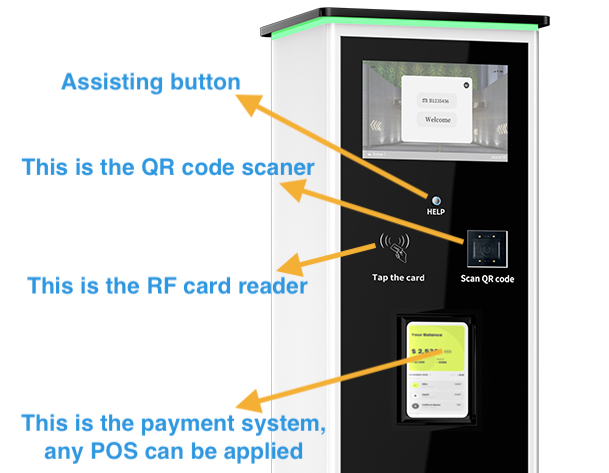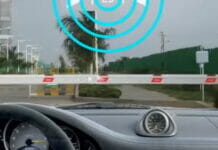Parking Payment Systems: Revolutionizing Parking Management with Advanced Technologies
Parking payment systems are an essential component of modern parking management solutions, providing seamless access control, enhanced security, and flexible payment options for both operators and users. As cities grow and traffic increases, parking facilities must evolve to accommodate the rising demand for convenience, efficiency, and flexibility. Fresh USA, a leading developer of RFID technology systems, software, and hardware, offers a comprehensive solution designed to meet the needs of today’s parking environments.
We provide Lifetime Software License. No Subscriptions, No Monthly Fees!
Parking payment systems have evolved from simple coin-operated machines to complex, automated setups capable of handling a variety of scenarios. Fresh USA’s advanced parking management system leverages cutting-edge technology, including License Plate Recognition (LPR) cameras, RFID cards, and AI-powered management tools. This article explores how these systems operate, their components, and the benefits they bring to parking facilities.
Core Components of Parking Payment Systems
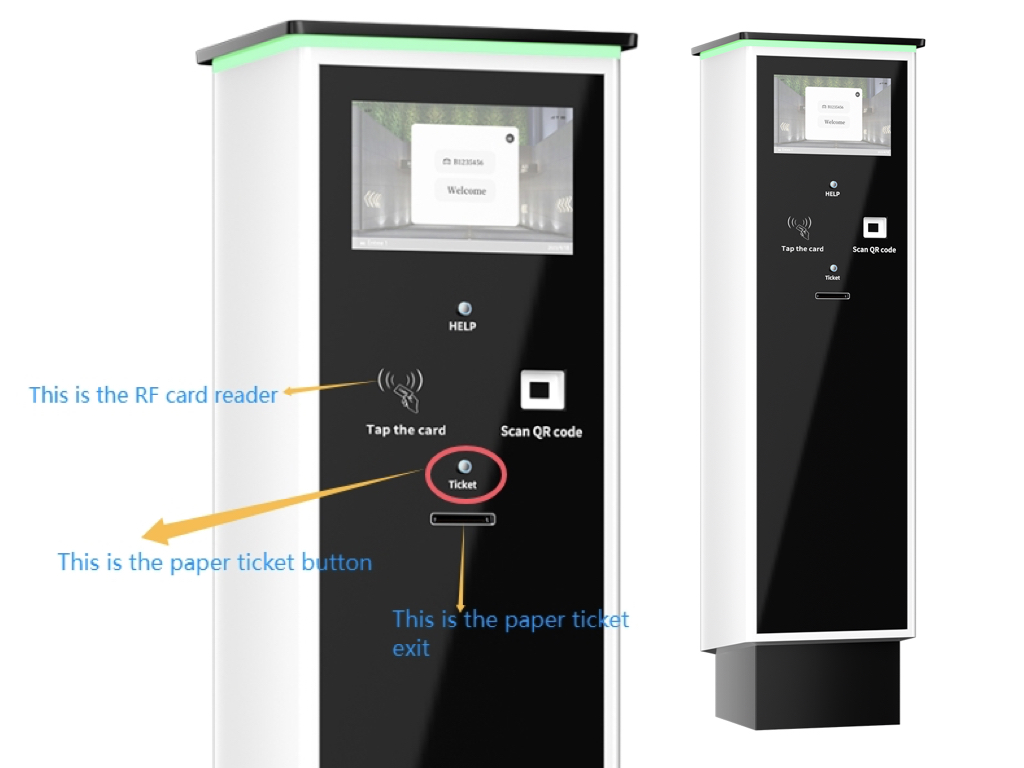
A modern parking payment system comprises several key components designed to work together seamlessly. At the entry point, an Entry Auto Ticket Station issues a thermal-printed paper ticket featuring a QR code and detailed information about the vehicle. The system also includes a built-in License Plate Recognition (LPR) camera to capture vehicle photos and recognize license plate numbers. This data, including the vehicle’s license plate number, time of arrival, and other customized details, is stored in a central database.
At the exit, an Exit Auto Ticket Station with a POS terminal handles payment processing. This station includes an LPR camera that compares the vehicle’s exit photo and license plate number with the entry data to ensure consistency. A Parking Barrier Gate is installed at both the entrance and exit to control vehicle flow, while an AI Parking Management System Box serves as the system’s central processing unit, providing advanced management features.
AI Parking Management System Box Features
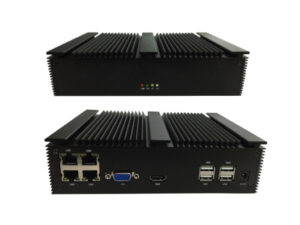
The AI Parking Management System Box, developed by Fresh USA, operates on a dedicated embedded Linux operating system, ensuring stability and reliability while replacing traditional computer systems. The Linux OS enables offline charging, minimizing the risk of downtime due to network issues. The system also includes a built-in network switching function that supports up to four network ports, simplifying installation and wiring. This reduces the need for additional network switches, making the overall setup more efficient and cost-effective.
The system’s architecture adopts a combination of Client-Server (C/S) and Browser-Server (B/S) models, allowing for quick and easy configuration of the parking lot in just four steps. Financial staff can access the system remotely through a computer browser to view reports and manage monthly card recharges, reducing the need for on-site personnel. The system supports a wide range of charging standards, such as day and night rates, peak and off-peak hours, segmented charging, and different rates for working and non-working days.
We provide Lifetime Software License. No Subscriptions, No Monthly Fees!
User Guide for Parking Payment Software, Download
The AI Parking Management System Box is designed for low power consumption, preventing security personnel from using the system for non-essential activities such as internet browsing or gaming. It supports real-time playback of up to four channels of high-definition video, providing enhanced surveillance capabilities. The system can manage multiple parking spaces and vehicles, allowing for flexible configurations based on capacity and availability. When parking spaces are full, the system can be configured to deny entry or direct vehicles to temporary spaces. Once a vehicle leaves, its spot is automatically reassigned to another vehicle.
The AI system also includes several advanced features to improve operational efficiency and security. It prevents vehicles from turning around and generating invalid records, and its anti-following function ensures that unauthorized vehicles cannot enter after another vehicle passes through the barrier. The system’s unique database protection mechanism prevents data loss due to accidental power failures, a common issue with traditional PC-based systems. Remote gate opening and configuration capabilities allow operators to manage the system from a mobile phone or computer, reducing the need for on-site maintenance.
Flexible Payment and Access Control Options
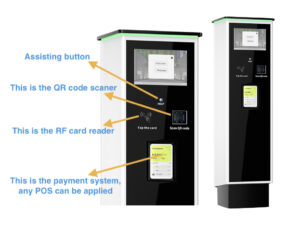
Fresh USA’s parking payment systems support various payment methods, including credit cards, mobile payments, and cash. The integrated POS terminal at the exit station is compatible with any bank or payment provider, allowing for seamless transactions. This flexibility ensures that users can choose their preferred payment method, enhancing convenience and satisfaction.
The system also supports RFID cards for regular customers or employees with permanent free parking privileges. These cards or windshield stickers are read by long-range RFID readers at both entry and exit points, allowing vehicles to pass without the need for a thermal paper ticket or payment. The license plate recognition system can also check against a database of registered plates for permanent free parking, providing an additional layer of convenience for regular users.
License Plate Recognition for Enhanced Security and Efficiency
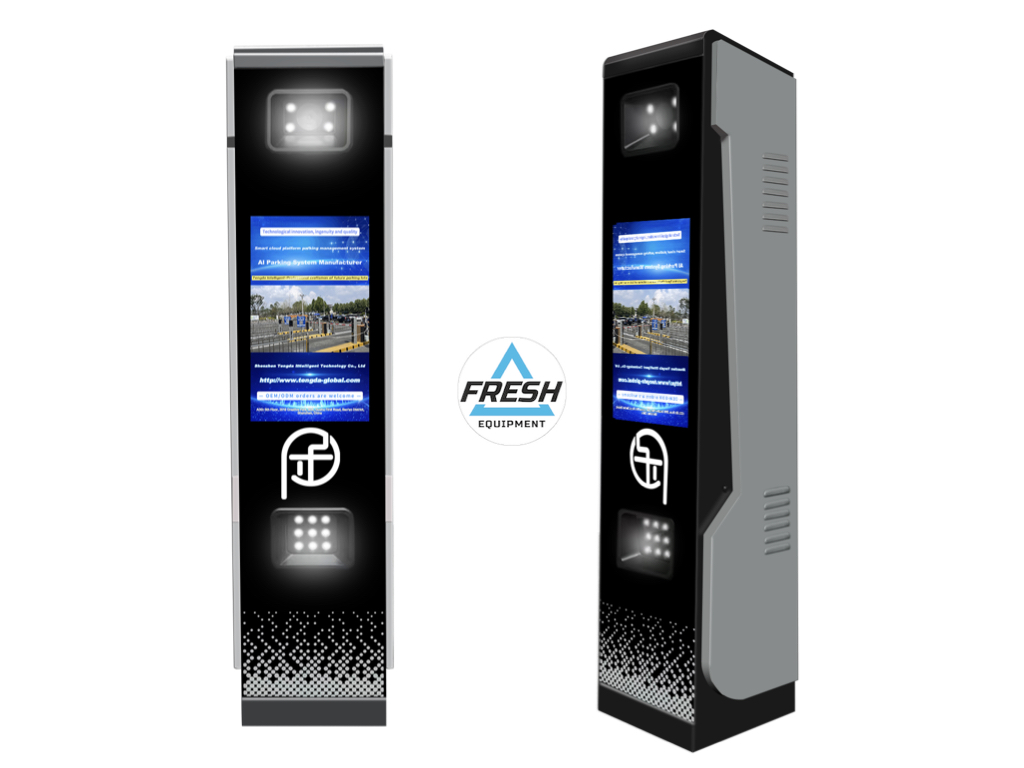
License Plate Recognition (LPR) cameras play a crucial role in modern parking payment systems, providing a reliable method for identifying and verifying vehicles. At the entry point, the LPR camera captures a photo of the vehicle and identifies its license plate number. This data is used to print a thermal paper ticket with a QR code containing all relevant information, including the time of arrival and license plate number.
At the exit, a second LPR camera captures another photo and checks the license plate number against the entry data stored in the central database. This ensures that only authorized vehicles can leave the parking facility and that the correct parking fees are charged. The system’s ability to compare entry and exit data enhances security by preventing unauthorized access and fraudulent activities.
Customizable Billing and Data Management
The central database of Fresh USA’s parking payment systems stores all entry and exit events, vehicle photos, license plate numbers, payment statuses, and other relevant data. This allows for detailed reporting and analysis, helping operators optimize their parking operations. The system can be customized to apply various billing methods, such as hourly rates, different rates for day and night, and peak and off-peak rates. This flexibility allows parking operators to tailor their pricing strategies to meet specific needs and maximize revenue.
The AI Parking Management System Box’s support for multiple parking spaces and vehicles enables dynamic management of parking resources. If a parking space exceeds its limit, the system can be configured to deny entry or redirect vehicles to temporary spaces. Once a vehicle leaves, its spot is automatically reassigned to another vehicle, ensuring efficient use of available space.
Conclusion
Parking payment systems are transforming the way parking facilities operate, providing greater efficiency, security, and convenience for both operators and users. Fresh USA’s advanced parking management solution combines cutting-edge technologies, such as RFID, LPR cameras, and AI-powered management tools, to deliver a comprehensive and flexible system. The AI Parking Management System Box, with its dedicated Linux operating system, built-in network switching, and advanced features, offers a robust and reliable platform for managing parking facilities. With support for multiple payment methods, customizable billing options, and enhanced security features, Fresh USA’s parking payment systems are designed to meet the diverse needs of modern parking environments.
Detailed Description Of The Work Logic Of The Automated Parking Lot Access Control With a Payment System
Here’s the description of the automated parking lot access control and payment system, incorporating the features of the AI Parking Management System Box:
System Components:
- Entry Auto Ticket Station: Includes a thermal printer for paper tickets and an entry LPR camera.
- Exit Auto Ticket Station with POS: Handles payments and has an exit LPR camera.
- License Plate Recognition Cameras: Two cameras: one at the entry and one at the exit.
- Parking Barrier Gates: One at the entrance and one at the exit.
- AI Parking Management System Box: Handles manual ticket processing, RFID card reader/writer for permanent users, and advanced management features.
- Central Database: Stores data such as license plate numbers, entry/exit times, vehicle photos, payment status, etc.
- Thermal Printed Paper Tickets: Contain a QR code and printed information about the vehicle, time of arrival, license plate number, and other customizable details.
- RFID Card Reader: For reusable entry/exit by regular customers or employees.
- POS System: Integrated at the exit point, compatible with any bank or payment provider.
AI Parking Management System Box Features:
- Dedicated Embedded Linux Operating System: Provides greater stability and reliability compared to traditional computers, enabling true offline charging capabilities without reliance on constant network connections.
- Built-in Network Switching Function: Supports up to 4 network ports, simplifying system installation and wiring by eliminating the need for additional network switches.
- C/S + B/S Architecture: Streamlines parking lot configuration into four simple steps. Financial staff can easily access reports and manage monthly card recharges using a standard computer browser (IE).
- Flexible Charging Standards Configuration: Supports a variety of charging standards, including different rates for day and night, working days and non-working days, peak and off-peak hours, 24-hour periods, and segmented charging.
- Low Power Consumption: The system is energy-efficient, reducing operational costs while preventing misuse by security guards (e.g., surfing the internet or playing games).
- High-Definition Video Support: Capable of real-time playback of up to 4 channels of 2 million high-definition video feeds.
- Multiple Parking Spaces and Vehicle Management: Supports the management of multiple parking spaces and vehicles. If the parking space exceeds its limit, the system can be configured to deny entry or redirect vehicles to temporary spaces. After a vehicle leaves, its spot can be reallocated to another vehicle.
- Prevents Invalid Records: Equipped with functionality to prevent vehicles from turning around and generating invalid records.
- Anti-Following Function: Prevents unauthorized vehicles from following another vehicle through the barrier, ensuring the gate closes properly after each vehicle.
- Unique Database Protection Mechanism: Embedded database protection solves the issue of data loss due to accidental power failures, which is a common problem in traditional PC-based systems.
- Remote Gate Opening and Configuration: Supports remote operation via mobile phone or computer, allowing for gate opening and system configuration without the need for on-site maintenance.
Step-by-Step Logic of the System:
1. Entry Process:
- Step 1: Vehicle Approaches Entrance
When a vehicle approaches the parking lot entrance, the first LPR camera captures a photo of the vehicle and identifies its license plate number. This information, including the vehicle’s photo and license plate, is sent to the central database. - Step 2: Ticket Issuance
If the vehicle is not recognized as a regular customer or employee (with a permanent free parking pass), the system instructs the Entry Auto Ticket Station to print a thermal paper ticket.- The ticket contains a QR code and printed information about the entry event, including the entry time, license plate number, vehicle photo, and any other customized details.
- The driver takes the ticket from the dispenser.
- Step 3: Barrier Gate Opens
After the ticket is taken, the Entry Auto Ticket Station signals the entry barrier gate to open. The vehicle is then allowed to enter the parking lot. - Step 4: Data Logging
The entry event, including the license plate number, entry time, vehicle photo, and ticket ID (QR code), is logged in the central database.
2. During Parking:
- Free Parking Time Management
The system can be pre-configured with free parking durations (e.g., 2 or 3 hours). This time is automatically calculated from the time of entry logged in the system.
3. Exit Process:
- Step 1: Vehicle Approaches Exit
When the vehicle approaches the exit, the second LPR camera captures a photo of the vehicle and identifies its license plate number. This information is sent to the central database. - Step 2: Consistency Check
The system compares the exit photo and license plate number with the entry photo and license plate number stored in the database to ensure consistency.- If the license plate number and the vehicle photo match the records from the entry point, the system proceeds with payment processing.
- Step 3: Ticket and Payment Verification
The driver presents the thermal paper ticket (with the QR code) to the Exit Auto Ticket Station with the integrated POS terminal.- The system scans the QR code and finds a matching entry record, checks for consistency between entry and exit data, and calculates the parking fee based on the configured billing method (e.g., by the hour, different rates for day/night, etc.).
- The system takes into account the free parking duration (if applicable) and only charges for the time exceeding the free period.
- Step 4: Payment Processing
The driver pays using one of the accepted payment methods. The POS system at the exit point is designed to integrate with any bank or payment provider, allowing for various payment options (credit card, mobile payment, cash, etc.). After successful payment, the system records the transaction in the database. - Step 5: Barrier Gate Opens
Upon successful payment and verification, the Exit Auto Ticket Station signals the exit barrier gate to open, allowing the vehicle to leave.
4. Handling Special Situations:
- Lost Ticket
If the driver has lost their ticket, the operator can use the AI Parking Management System Box with an RFID card reader/writer to manually issue a new ticket.- The system checks the entry time by cross-referencing the license plate number and vehicle photo recorded at the entry and issues a replacement ticket, charging the fee accordingly.
- Permanent Free Parking for Regular Customers/Employees
Regular customers or employees with free parking privileges are issued RFID cards or windshield stickers.- At Entry: The long-range RFID reader at the entrance detects the card or sticker and signals the entry barrier gate to open without issuing a thermal paper ticket.
- At Exit: The long-range RFID reader at the exit reads the card or sticker again and signals the exit barrier gate to open without requiring payment.
- Alternatively, the license plate recognition system checks against a list of registered plates for permanent free parking and opens the gate automatically.
5. Central Database and Custom Billing:
- Data Management
The central database stores all entry and exit events, vehicle photos, license plate numbers, payment statuses, and special configurations (e.g., free parking periods, regular customer license plates). - Custom Billing
The system can be customized to apply various billing methods, such as different rates for day/night, by the number of vehicles, or based on parking duration. The system automatically calculates fees at the exit point.
Supply, Support, and Customization of Payment Systems for Parking Access Control
The automated parking lot system uses advanced features provided by the AI Parking Management System Box, including a dedicated Linux operating system, flexible network and configuration options, support for multiple payment methods, and robust database protection. These features, combined with the use of LPR cameras, thermal-printed tickets, and a versatile POS system, ensure efficient management of parking access and payments. The system is designed for flexibility, security, and ease of use, meeting diverse operational needs and providing a smooth user experience.
Fresh USA specializes in the supply, support, and customization of cutting-edge payment systems for parking lots and garages. Located in the greater Chicago area, our company is a leading developer of RFID technology systems, as well as associated software and hardware solutions. We are dedicated to delivering innovative, reliable, and flexible access control systems that meet the diverse needs of parking facilities around the world.
At Fresh USA, we are committed to enhancing the efficiency and security of parking management through our innovative payment systems and access control solutions. Whether you are looking to upgrade your existing infrastructure or implement a new system, our expertise and global reach ensure that we can meet your needs with precision and reliability.
FAQ: Parking Payment Systems
1. What are parking payment systems?
Parking payment systems are automated setups designed to manage access control, security, and payment processing in parking facilities. These systems use various technologies, such as License Plate Recognition (LPR) cameras, RFID cards, thermal-printed tickets, and integrated POS terminals, to provide efficient and flexible solutions for both parking operators and users.
2. How do parking payment systems work?
Parking payment systems use multiple components that work together seamlessly. When a vehicle arrives, an entry station issues a thermal-printed ticket with a QR code, and an LPR camera captures the vehicle’s photo and license plate number. This data is stored in a central database. At the exit, the system verifies the vehicle using another LPR camera, checks consistency with entry data, and calculates parking fees. Payment is processed via an integrated POS terminal, which supports various payment methods.
3. What technologies are used in parking payment systems by Fresh USA?
Fresh USA’s parking payment systems incorporate technologies such as:
- License Plate Recognition (LPR) cameras to capture vehicle photos and recognize license plate numbers.
- RFID technology for reusable entry and exit by regular customers or employees.
- AI Parking Management System Box with a dedicated Linux operating system for stability, reliability, and offline charging.
- Thermal-printed tickets with QR codes for entry tracking.
- POS terminals that integrate with any bank or payment provider for flexible payment options.
4. What is the AI Parking Management System Box, and what are its features?
The AI Parking Management System Box is a central processing unit for managing parking facilities. It runs on an embedded Linux operating system for stability and reliability, supports multiple network ports for easy installation, and allows remote configuration. The box features include real-time video playback, low power consumption, flexible billing standards, prevention of unauthorized vehicle entry, and a robust database protection mechanism.
5. How does the License Plate Recognition (LPR) technology enhance parking security?
LPR cameras capture vehicle photos and license plate numbers at both entry and exit points. At the exit, the system compares these with the stored entry data to ensure consistency, preventing unauthorized access and fraudulent activities. This technology helps verify that only authorized vehicles enter and exit the facility, improving overall security.
6. What types of payment methods are supported by Fresh USA’s parking payment systems?
Fresh USA’s parking payment systems support multiple payment methods, including credit cards, mobile payments, and cash. The integrated POS terminal at the exit station is compatible with any bank or payment provider, offering flexibility for users to choose their preferred payment method.
7. Can the parking payment system be customized for different billing methods?
Yes, the system allows for various billing methods, such as hourly rates, different rates for day and night, peak and off-peak rates, and segmented charging. These flexible billing options help parking operators tailor their pricing strategies to meet specific needs and maximize revenue.
8. How are regular customers or employees managed within the system?
Regular customers or employees with permanent free parking privileges are issued RFID cards or windshield stickers. These are read by long-range RFID readers at both the entry and exit points, allowing vehicles to enter and exit without requiring a thermal paper ticket or payment. The system can also use license plate recognition to verify authorized vehicles.
9. What happens if a driver loses their parking ticket?
If a driver loses their ticket, the AI Parking Management System Box can manually issue a new ticket using the stored entry data. The system checks the vehicle’s entry time by cross-referencing the license plate number, and vehicle photo recorded at entry and calculates the appropriate fee for the replacement ticket.
10. What are the benefits of using an AI Parking Management System Box?
The AI Parking Management System Box offers several benefits:
- Stability and Reliability: Runs on a dedicated Linux operating system.
- Simplified Installation: Built-in network switching reduces the need for extra hardware.
- Flexible Configuration: Supports multiple billing methods and dynamic management of parking resources.
- Enhanced Security: Prevents unauthorized access and data loss.
- Remote Management: Allows operators to manage the system remotely via mobile or computer, reducing on-site maintenance needs.
11. Can the parking payment system handle multiple parking spaces and vehicles?
Yes, the system can manage multiple parking spaces and vehicles. If a parking space is full, the system can deny entry or redirect vehicles to temporary spaces. Once a vehicle leaves, its spot is automatically reassigned, ensuring efficient use of available space.
12. What makes Fresh USA’s parking payment systems unique?
Fresh USA’s parking payment systems combine advanced technologies such as RFID, LPR cameras, and AI-powered management tools to provide a comprehensive, flexible solution. The AI Parking Management System Box enhances reliability, supports various payment options, and offers robust security features. The system is designed to meet diverse operational needs, providing a smooth and efficient parking experience for users and operators alike.
Parking Payment Systems: The Future of Parking Convenience
Parking payment systems have come a long way from simple coin-operated meters. With the rise of technology, parking lots and garages are transforming into sophisticated hubs designed to make parking faster, safer, and easier. Whether you’re a city planner, business owner, or parking facility manager, adopting a modern parking payment system is key to enhancing both user experience and operational efficiency. In this article, we’ll dive into the world of parking payment systems, explore their components, benefits, and the future of parking technology.
Parking has always been a challenge in busy cities and private facilities. If you’ve ever circled around the block for what feels like an eternity looking for a spot, or fumbled for loose change to feed an old parking meter, you understand the frustration. Now, imagine a world where you can pull into a parking space, pay seamlessly using a mobile app, and simply drive off when you’re done without any fuss. Sounds like a dream, right?
That dream is now a reality, thanks to parking payment systems. These innovative systems are designed to automate the entire parking experience—from entry to payment—making it more efficient and user-friendly.
Types of Parking Payment Systems
Parking payment systems come in various forms, catering to different environments and user preferences. Here’s a look at the most common types:
Traditional Coin Meters
These are the classic parking meters we’ve all seen before. While still used in some areas, they are becoming obsolete due to their limited payment options and lack of integration with modern technology.
Digital Payment Terminals
These systems allow drivers to pay with credit cards, debit cards, and even mobile payments like Apple Pay or Google Pay. They are widely used in urban areas and large parking garages.
Mobile App-Based Payment Systems
Mobile app-based systems are rapidly becoming the go-to solution for parking. Users can download an app, link their payment information, and handle everything from reserving a spot to making payments—all from their smartphone.
Key Features of Modern Parking Payment Systems
What makes modern parking payment systems stand out from their traditional counterparts? It’s all about features that prioritize convenience, security, and flexibility.
Multi-Payment Options
Gone are the days when you had to carry cash for parking. Today’s systems offer a wide range of payment methods, including credit/debit cards, mobile payments, and even contactless options.
License Plate Recognition (LPR)
LPR systems automate entry and exit by scanning and recognizing your license plate, eliminating the need for paper tickets and physical validation.
RFID Technology Integration
For regular users, RFID (Radio Frequency Identification) technology allows for contactless entry and exit. A simple scan of an RFID card or sticker provides immediate access to parking without manual payment processes.
How Parking Payment Systems Work
Parking payment systems are designed to be intuitive for both users and operators. Let’s break down the process:
The Entry
As a vehicle enters a parking lot or garage, the system automatically scans the license plate (if LPR is used) or issues a QR code or RFID-enabled ticket. The vehicle’s information is stored in the central system for future reference.
The Payment
Once parked, users can pay using the payment terminal, a mobile app, or even automatically (based on pre-registered details). The system calculates the fee based on parking duration, selected pricing models, and any special conditions.
The Exit
When the vehicle exits, the system checks for payment verification, and if all is clear, it automatically raises the barrier to allow the vehicle to leave. Easy, right?
The Role of AI in Parking Payment Systems
AI is becoming a powerful tool in the parking industry, revolutionizing how data is processed and how parking management systems operate.
AI-Powered Data Collection and Analysis
AI collects and analyzes vast amounts of data, predicting parking patterns and offering insights that help parking facilities optimize space usage, set dynamic pricing, and reduce congestion.
Enhancing Security and Efficiency
AI also plays a role in improving security by detecting unusual activity, preventing fraud, and ensuring that the parking facility operates smoothly.
The Benefits of Implementing Parking Payment Systems
So, why should you consider adopting a parking payment system? Here are some compelling reasons:
- Reduced Operational Costs: Automated systems reduce the need for on-site staff, cutting down on labor costs.
- Improved User Experience: A smooth, quick payment process increases customer satisfaction.
- Enhanced Revenue Collection: Automated payments reduce the risk of missed payments or fraud.
Security Features in Parking Payment Systems
Security is a top priority in parking payment systems. Here are some of the measures in place to protect users and operators:
- Anti-Fraud Measures: These systems prevent fraudulent transactions and unauthorized access.
- Secure Payment Gateways: Data encryption ensures that payment information is kept safe during transactions.
Customization Options for Parking Payment Systems
One size doesn’t fit all, and modern parking payment systems offer the flexibility to adapt to different needs:
Flexible Billing Models
From hourly charges to day passes and special event rates, parking payment systems can be customized to fit any pricing model.
Customizable Software and Interfaces
Parking operators can modify the system’s interface and backend to suit their specific requirements, including branding, user interface, and more.
Conclusion
Parking payment systems are the future of parking management. With their ease of use, security features, and customizable options, they not only improve user experience but also streamline operations for parking facility managers. As technology continues to evolve, parking payment systems will play an increasingly important role in modern urban planning.
FAQs
1. What are the main benefits of parking payment systems?
Parking payment systems offer multiple benefits, including improved efficiency, enhanced security, reduced operational costs, and a better user experience.
2. How do parking payment systems improve security?
These systems use advanced encryption and anti-fraud measures to ensure that transactions are secure and unauthorized access is prevented.
3. Are these systems difficult to maintain?
No, parking payment systems are designed to be low-maintenance, with regular updates and customer support available for any technical issues.
4. Can parking payment systems be integrated with mobile apps?
Yes, many parking payment systems offer mobile app integration, allowing users to pay, reserve spots, and even receive notifications on their smartphones.
5. How do I choose the right system for my facility?
When selecting a system, consider factors like the size of your facility, the volume of traffic, and your specific needs (e.g., multi-payment options, LPR, RFID integration).

